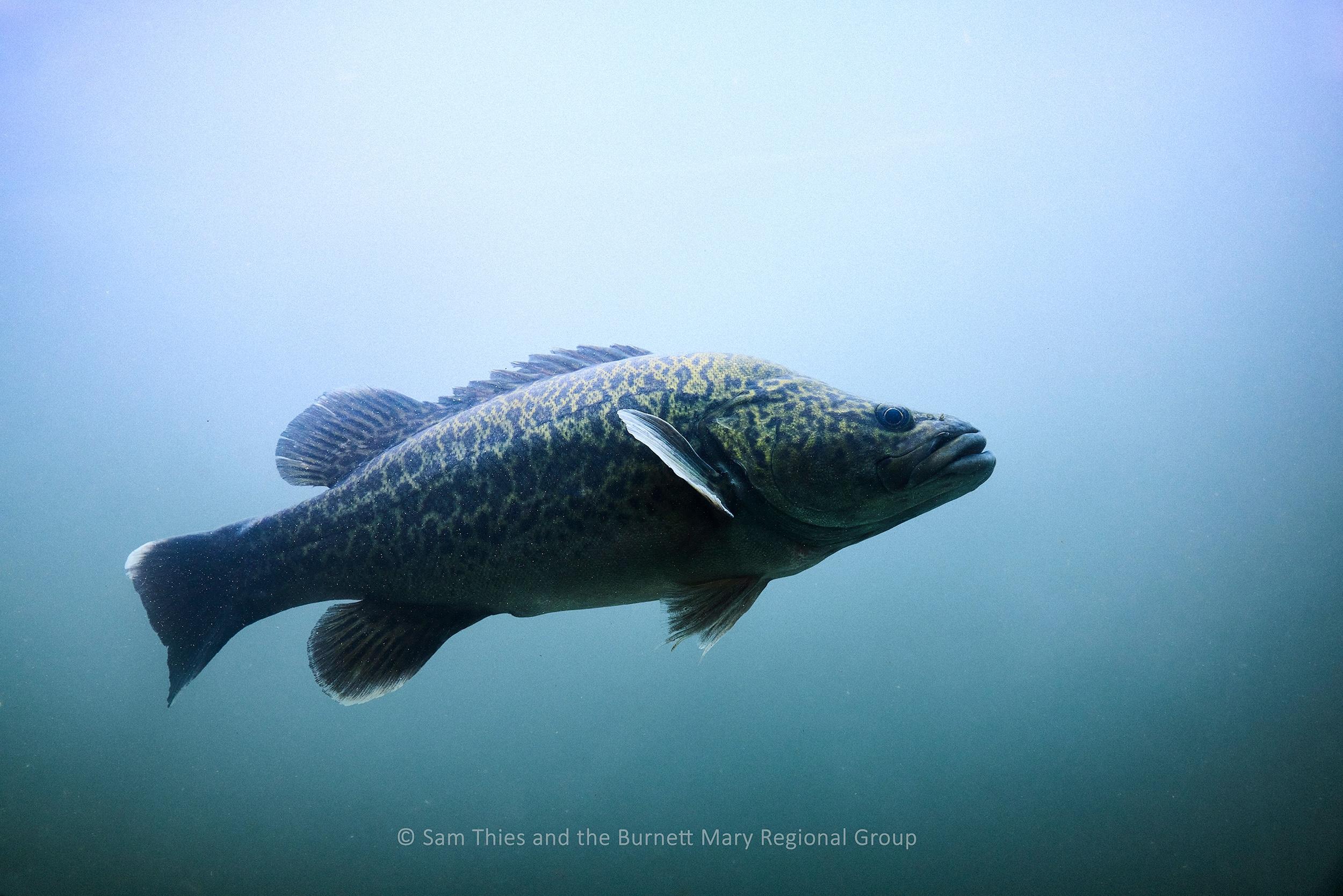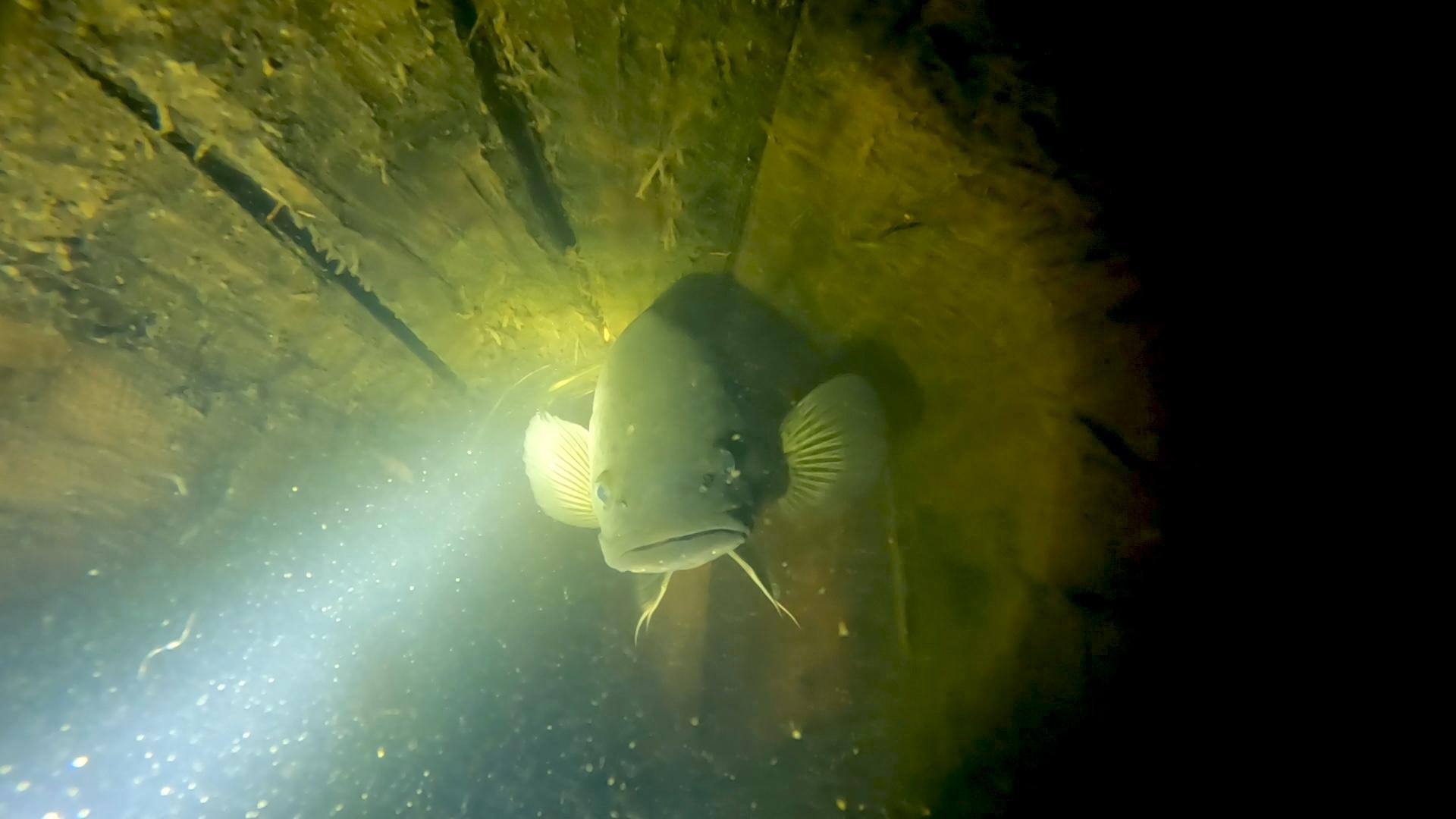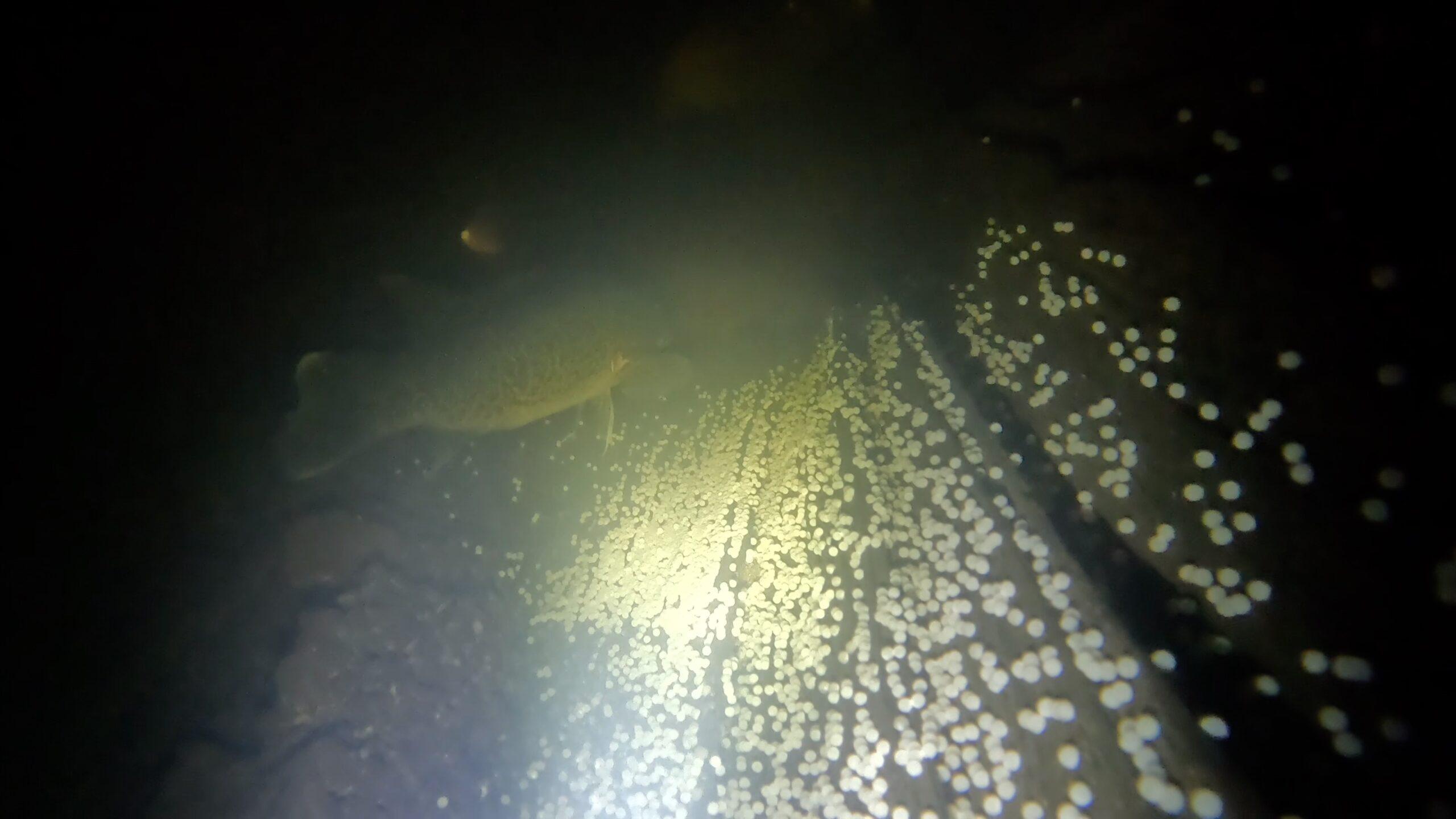31 October 2024
For the first time, researchers from Griffith University and funded by the hub have deployed 23 “cod logs” into the upper reaches of the Mary River catchment: hollow logs that aim to provide artificial habitat for the endangered Mary River Cod.
The Mary River (Moonaboola) in south-eastern Queensland is a sanctuary for several threatened and endangered freshwater species, such as the Australian lungfish and the Mary River turtle.
But the area has also been heavily impacted in recent years by extreme weather events, including major flooding, droughts, heatwaves and bushfires.
Floods have washed away many of the natural spawning habitats used by many Mary River species, including the endangered Mary River cod. It’s one of Australia’s most endangered freshwater fishes – in the 1980s there were as few as 600 individuals in the wild.

The endangered Mary River Cod is one of the rarest freshwater fishes in Australia. Image by Sam Thies and the Burnett Mary Regional Group
In a research collaboration – funded in part by the Australian Government through the National Environmental Science Program’s (NESP) Resilient Landscapes Hub and the Commonwealth and Queensland Government Disaster Recovery Funding Arrangements (DRFA) Environmental Recovery Program – Griffith University researcher Dr Luke Carpenter-Bundhoo is trialling the use of ‘cod logs’ (artificial habitats made from natural materials) to add new nesting habitats for the Mary River cod.
“Mary River in southeast Queensland is an important ecosystem for iconic native species like the endangered Mary River cod,” Minister for the Environment and Water Tanya Plibersek MP said.
“Sadly, it is another species under threat due to the impacts of climate change and has been hit hard by recent flooding and bushfires. With this funding we’re drawing on expertise from scientists to help guide protection of this species using methods such as the introduction of artificial logs. We want to better protect our precious threatened species and leave nature better off for generations to come.”

The endangered Mary River Cod are using the new ‘cod logs’, made from hollowed out from trees, in this hub-funded trial in Queensland’s Mary River (Moonaboola). Image: Australian Rivers Institute.
While bird and possum boxes are regularly installed in trees and artificial reefs are commonplace in marine conservation, this is the first time artificial nesting structures have been used for wild Mary River cod.
“Mary River cod are currently listed as endangered, and are at particular risk for multiple reasons,” said Dr Carpenter-Bundhoo, a Research Fellow from Griffith’s Australian Rivers Institute.
“There has been a long history of degradation to river banks and in-channel habitats for native fish in the Mary River. Recent major flood events in 2022 have exacerbated the problem by washing away trees and submerged logs in the river channel – these provide natural nest structures used by cod for spawning and shelter.
“Another key threat to cod is angling, which is prohibited throughout much of the catchment during the breeding season from August to October. If a cod protecting their nest is caught, it exposes their eggs and larvae to predation by other fish, even if the angler returns the cod to the river. A nest can be lost in the time it takes to take a photo with the fish.”
Working with the Mary River Catchment Coordinating Committee, Burnett Mary Regional Group and Jinibara traditional owners, Dr Carpenter-Bundhoo and the team recreated 24 artificial logs from local, hollowed-out, natural timber and installed them in key sections of the river in July 2024, in preparation for the breeding season from August.

Nathaniel Larsen and Dr Carpenter-Bundhoo floated the logs into place and weighed them down. Image: Caitlin Jones
The logs have been regularly monitored since and the early results have been very encouraging, with Dr Carpenter-Bundhoo and the team observing large male cod – who bear the brunt of child-rearing for several weeks – using the logs as nesting sites and protecting their brood of thousands of eggs and larvae.
“What has also been incredible about this project is being able to better understand the breeding schedule and behaviour of this species,” he said.
“Until now, all information on the Mary River cod has been obtained from hatcheries; no one has ever seen this in the wild before.
“This study is truly a case of a picture being worth a thousand words. We’re using underwater cameras to record definitive timing of their breeding schedule in the wild, which can ultimately enhance conservation efforts and hopefully improve their conservation status.
“Braving the cold water to deploy and monitor the cod logs was challenging, but seeing the Mary River cod actually nesting in our cod logs made it all worthwhile.”
The NESP Resilient Landscapes Hub hopes the research will inform the cost-effective restoration of freshwater habitats, to bolster the natural reproduction and recruitment of the endangered Mary River cod.
This work is part of a larger $550,000 NESP-funded project in Queensland’s Mary River (Moonaboola), where scientists, governments, catchment Natural Resource Management groups, Traditional Owners and landholders are collaborating to support the recovery of threatened species and their critical habitats.
For interviews: Please contact Senior Communications Officer Carley Rosengreen, 0468 574 720, c.rosengreen@griffith.edu.au

In exciting news, the endangered Mary River Cod is monitored using the cod logs to lay and develop their eggs. Image: Australian Rivers Institute.
Want to know more about the Resilient Landscapes Hub's activities and our research into practical solutions to environmental problems? Stay informed about activities, research, publications, events and more through the Hub newsletter.